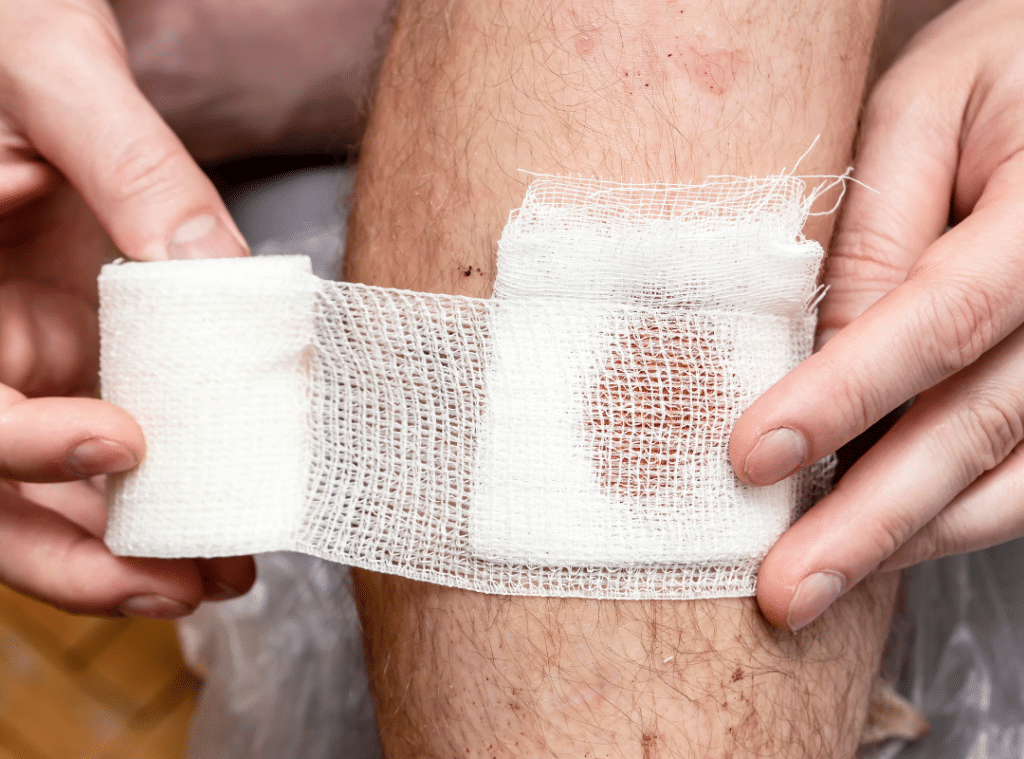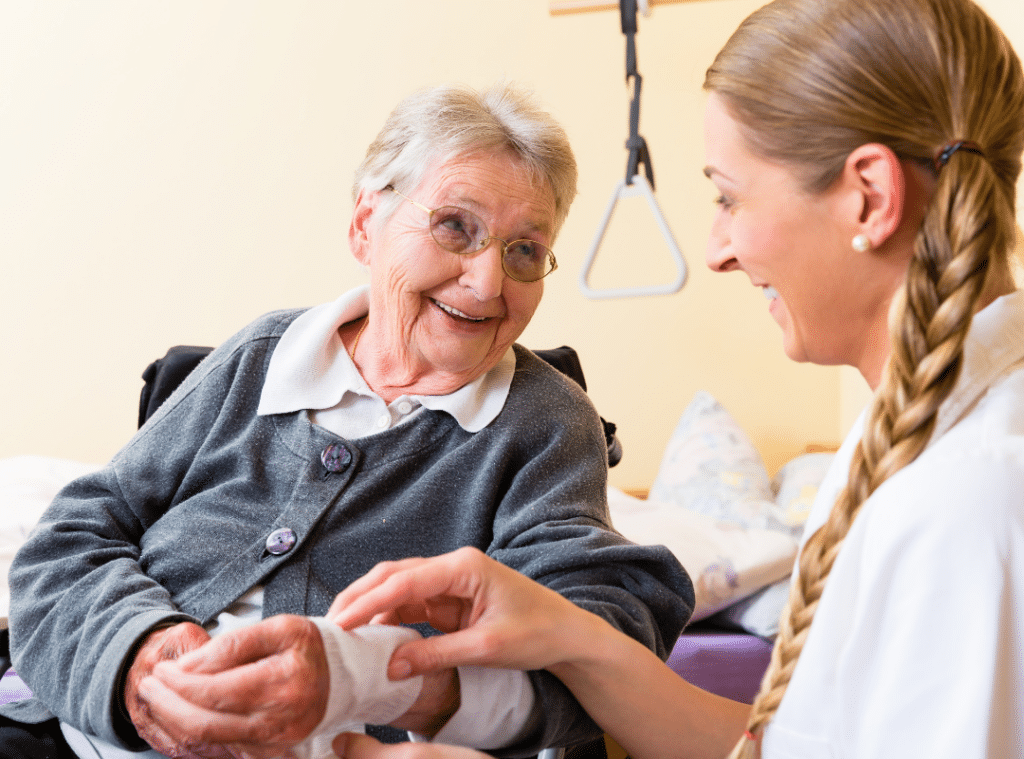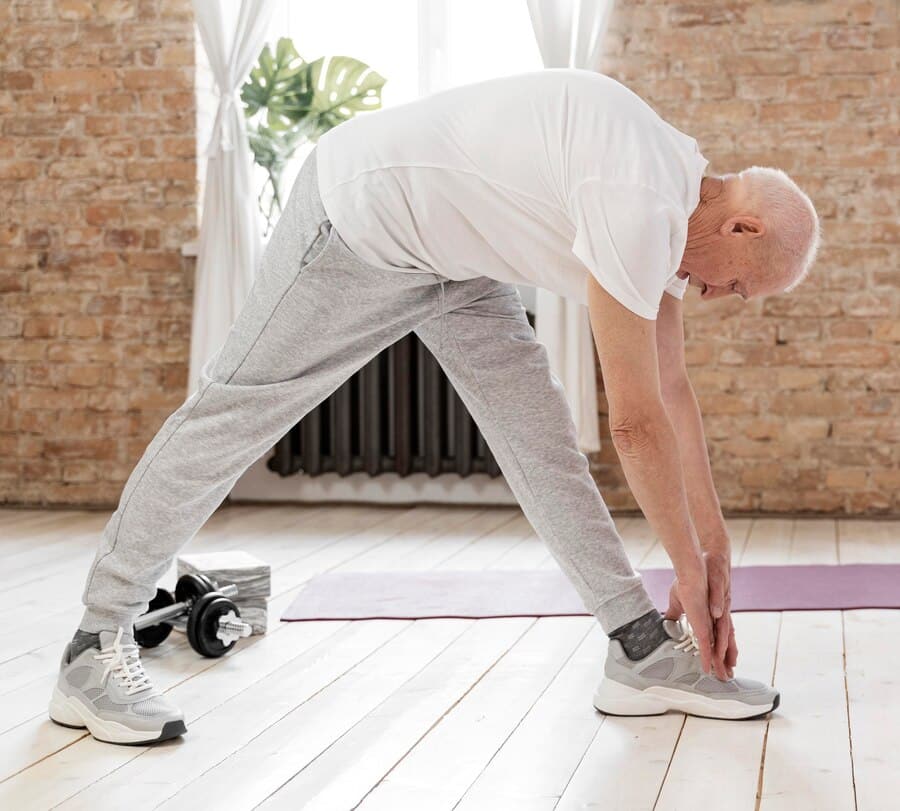Is it true that aging skin requires special attention to prevent wounds? If you’ve noticed that the skin of elderly individuals seems more fragile and prone to injury, you’re not alone in your concerns. At The Oaks at Nipomo, we understand that the nuances of wound care can make a significant difference in their comfort and healing. By exploring effective prevention strategies and treatment options, you can help safeguard against the risks of thin skin. But what specific steps can you take to guarantee their skin remains as healthy as possible?
Wound care for elderly with thin skin
Wound care for the elderly with thin skin requires a thoughtful approach due to the skin’s increased fragility and susceptibility to injury. As caregivers, you need to be aware that aging leads to considerable structural changes in the skin, including a loss of collagen and elastin, making it thinner and more delicate. This increased fragility heightens the risk of skin tears, so your vigilance is essential.
Start by regularly evaluating the individual’s skin for any signs of damage or changes. When cleaning wounds, use mild soap and lukewarm water, avoiding harsh antiseptics that can further irritate fragile skin. If a skin tear occurs, gently reapproximate the flap and secure it with a non-adherent dressing to minimize trauma during changes.
Keeping the skin moisturized and hydrated is vital, as this supports elasticity and resilience. Encourage a well-balanced diet rich in nutrients that promote skin health, including nutrition and diet that play a crucial role in overall well-being.
Finally, consider environmental factors—removing sharp edges and ensuring proper lighting can greatly reduce the risk of accidental injuries. With attentive care and proactive measures, you can help maintain the integrity of elderly skin and enhance their quality of life.
Type 2 skin tear treatment
When managing a Type 2 skin tear, it’s important to act quickly and gently to promote healing.
Start by cleansing the area with sterile water or saline solution, avoiding harsh soaps that could irritate delicate skin. If there’s any bleeding, apply gentle pressure with a clean cloth or sterile gauze until it stops.
Next, carefully reposition the skin flap back into place, ensuring the edges align for best healing. Your tender touch matters here, as you want to minimize further trauma.
Once the flap is in position, choose a suitable dressing—soft silicone dressings are often preferred because they’re gentle on fragile skin and promote a moist healing environment.
Monitoring the wound regularly for signs of infection, such as increased redness, swelling, or discharge, is critical. If you notice any concerning changes, contact a healthcare professional promptly. Additionally, caregivers should be aware of the importance of personalized care services in supporting residents’ overall well-being during recovery.
Educating caregivers about these steps is fundamental, as their support can greatly impact the healing process.

Best dressing for skin tears in elderly
Choosing the best dressing for a skin tear in the elderly can greatly impact healing outcomes. You’ll want to consider dressings that protect delicate skin while promoting a moist wound environment for effective management.
Soft silicone dressings are often ideal; they minimize trauma during changes and adhere gently to fragile skin.
For low to moderate exudate, transparent film dressings work well, allowing for wound visualization while providing a barrier to contaminants. Hydrocolloid dressings are another excellent choice for moderate exudate; they help maintain moisture and support healing.
If the skin tear is more significant, foam dressings offer absorbency and cushioning, protecting the area from further injury. Non-adherent dressings are also beneficial as they reduce pain during dressing changes, which is essential for elderly patients who may be sensitive.
Whichever dressing you choose, monitoring the wound regularly for signs of infection or complications is important. Additionally, understanding the impact of age-related memory loss can help caregivers provide better support during healing.
Always consult with healthcare professionals for personalized recommendations tailored to the individual’s needs, ensuring the best possible outcomes in skin tear management. Your attentive care can make a real difference in their healing journey.
Taking care of wounds in elderly individuals with thin skin can feel overwhelming, but with the right approach, you can greatly improve their healing process. Have you considered how a simple change in dressing or a gentle cleaning routine could make a difference in their comfort? By staying proactive and attentive, you can protect their fragile skin and foster resilience, ensuring they enjoy a better quality of life despite the challenges age may bring. For more information and assistance, contact The Oaks at Nipomo at (805) 723-5206.
Discover the level of care you or your family member requires. What Level of Care Do You Need?
Questions on Wound Care and Skin Protection for Elderly with Fragile Skin
- How do you treat thin skin wounds?
Treat thin skin wounds by gently cleaning the area with mild soap and water or a saline solution to remove debris. Apply a non-adherent or hydrogel dressing to keep the wound moist and promote healing. Always secure the dressing with gentle adhesives to avoid further skin damage. - What is the best wound care for a skin tear in the elderly?
The best care involves cleaning the wound with saline or a wound cleanser and gently repositioning any skin flap, if present. Use a silicone-based or non-adherent dressing to protect the area and encourage healing, ensuring the dressing is changed as per the healthcare provider’s instructions. - What is the best wound dressing for fragile skin?
Silicone dressings or hydrogel sheets are ideal for fragile skin as they are gentle and minimize trauma during removal. Foam dressings with soft borders also provide cushioning and protection while maintaining a moist environment for wound healing. - What helps thin skin in the elderly?
Proper hydration and nutrition can improve skin health, particularly by consuming foods rich in vitamins C, E, and collagen. Using moisturizers with ceramides or hyaluronic acid can strengthen the skin barrier, while gentle handling and avoiding harsh products help reduce further thinning. - How to prevent skin tears in the elderly?
Prevent skin tears by creating a safe environment free of sharp edges or clutter and encouraging the use of protective clothing or sleeves. Regularly moisturize the skin to keep it supple and avoid using adhesives directly on fragile skin. Additionally, educate caregivers on gentle handling techniques to minimize trauma.








